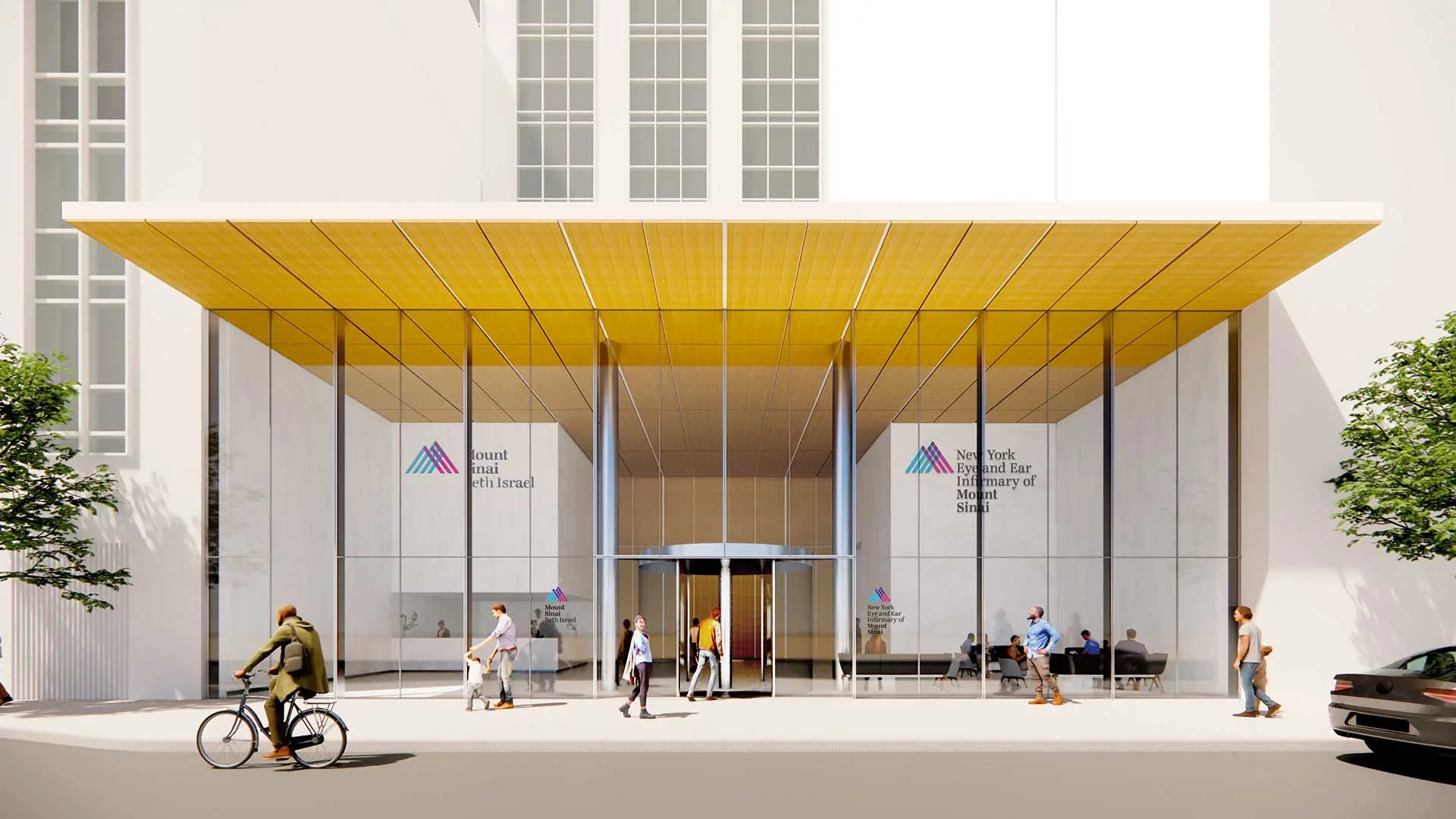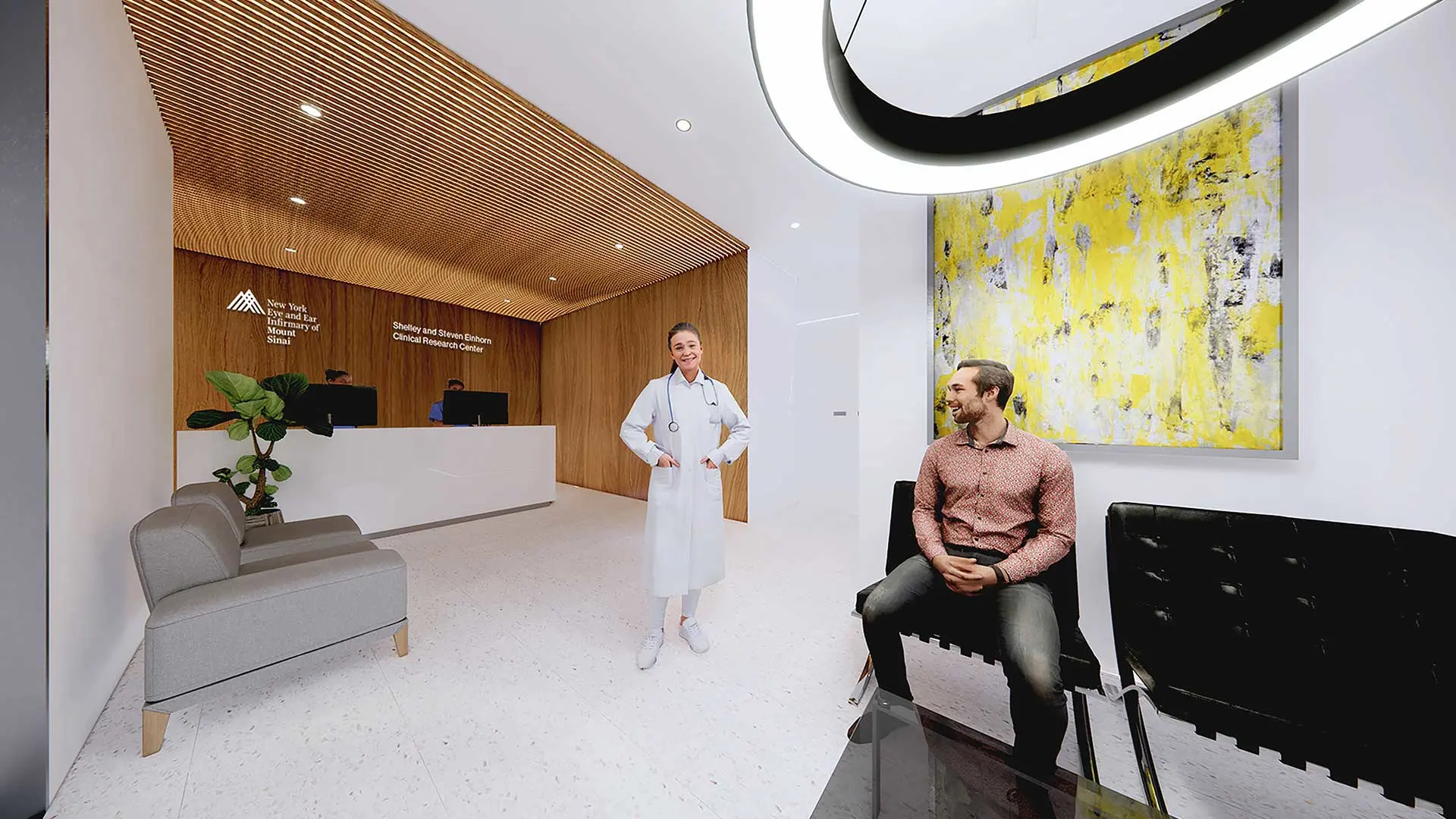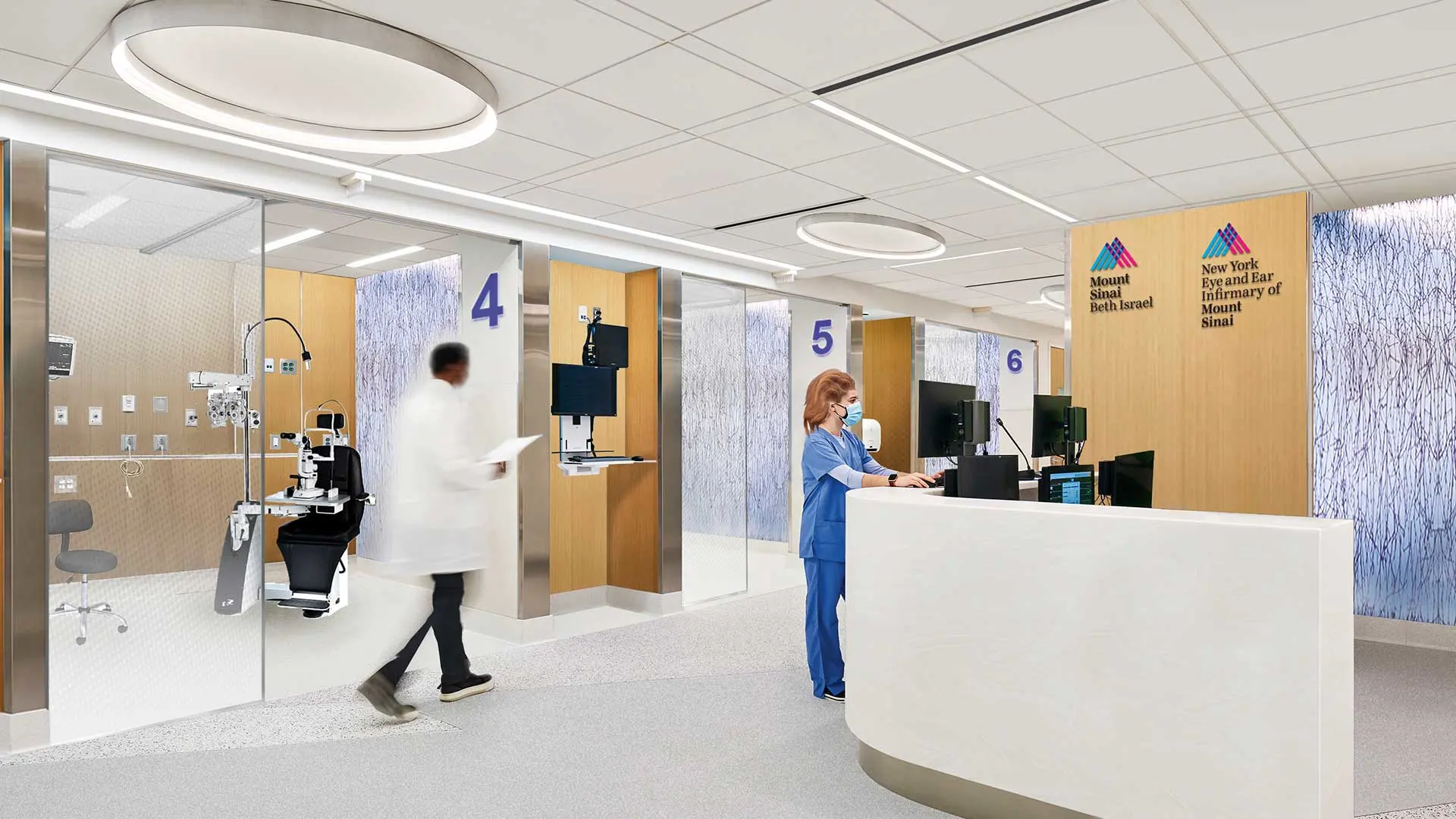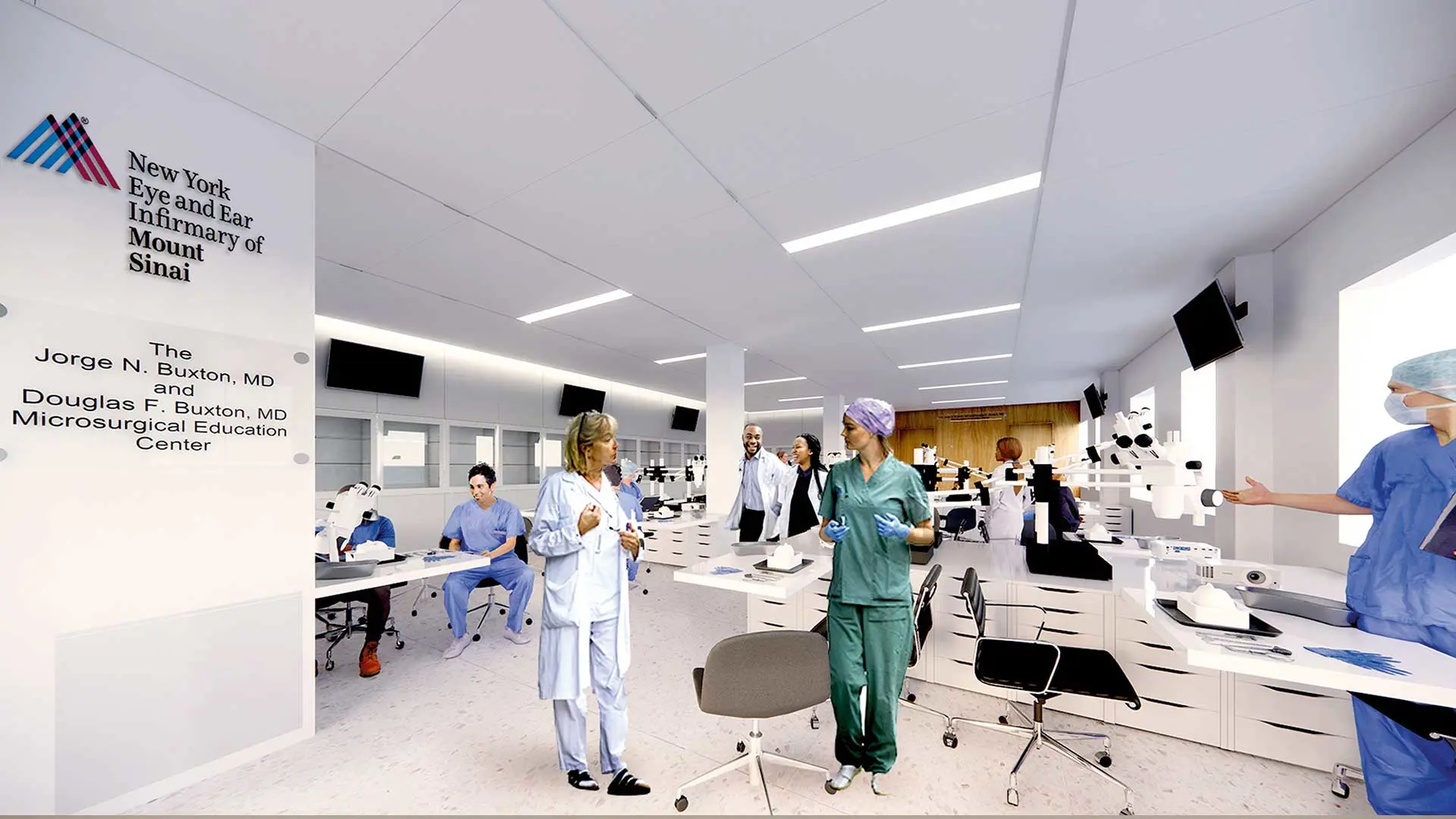The twenty-first century health care landscape is being reconfigured by changes that are breathtaking in their scope and intensity. They include the migration of patient care from the hospital out to the community, the implementation of site-neutral payments and their impact on hospital revenue, and the introduction of bold new technologies such as telemedicine and artificial intelligence, all of which will affect how institutions deliver their patient care services. Most recently, the unremitting COVID-19 pandemic is forcing every health care system to intelligently adapt to and invest in solutions to meet the challenges of future disruptions to patient care.
As New York Eye and Ear Infirmary of Mount Sinai (NYEE) embarks on its third century of growth and innovation, the institution is confronting these changes head on. This will require strategic implementation of a sustainable model that allows the institution to continue to grow and remain economically strong, while still maintaining its mission to serve the community.
“We’re going to thrive for the next two centuries as we remain more committed than ever to our mission of world-class patient care, scientific discovery to find novel treatments for ocular diseases, and unparalleled education of future ophthalmic leaders,” says James C. Tsai, MD, MBA, President of NYEE and Chair of the Department of Ophthalmology at the Icahn School of Medicine at Mount Sinai and the Mount Sinai Health System. “But there will likely be major changes to our campus as we open up NYEE-branded ambulatory surgery center settings, and as we modernize our aging facilities to make them compatible with health care in the twenty-first century.”
NYEE is partnering with the Mount Sinai Health System to obtain the resources necessary to bring this new ambulatory care blueprint to fruition. The new ambulatory surgical center near Manhattan’s Madison Square Park will add another patient care site to NYEE’s growing portfolio of faculty practice sites as well as affiliated clinical sites and teaching institutions throughout the New York metropolitan region. And the institution is collaborating with the Health System to modernize and colocate its clinical, educational, and research resources near and around the campus of Mount Sinai Beth Israel, a few blocks away from the existing NYEE campus. (See images below.)
Beyond infrastructure, the future of our institution will be molded by the wide-ranging research that is recognized internationally. That initiative is powered by our rich capabilities in the areas of imaging, genomics, mathematical modeling, artificial intelligence, stem cells, and viral vectors. “We’ll continue to support basic research that’s dedicated to the preservation and restoration of vision, and which creates opportunities for our clinical faculty to translate science into advanced patient care,” emphasizes Louis R. Pasquale, MD, FARVO, Director of the Mount Sinai/New York Eye and Ear (NYEE) Eye and Vision Research Institute and Site Chair of Ophthalmology, The Mount Sinai Hospital and Mount Sinai Queens. “That means working as we have in the past with pharmaceutical and industry partners on research with clinical potential, while expanding projects initiated by our own clinician-scientists, and those supported by the NIH.”
"It’s a chance for us to draw on our trove of experience over the past 200 years to reimagine how we will remain in the forefront of patient care and innovation."
James C. Tsai, MD, MBA
Underscoring the broad sweep of our research is the work of talented scientists like Timothy A. Blenkinsop, PhD, Associate Professor of Ophthalmology, and Cell, Developmental, and Regenerative Biology, whose lab is making considerable headway in unraveling the biology of the human eye to uncover mechanisms of cell regeneration. The Department of Ophthalmology is streamlining the work of its research faculty by organizing them into teams to tackle challenges such as finding upstream factors that contribute to complex diseases through novel analytical epidemiology and big data approaches. Also, teams are being assembled to discover ocular biomarkers for systemic disease with the help of artificial intelligence and NYEE’s sophisticated imaging capabilities, and to use stem cell and viral vector technologies to enable the long-sought-after reconstitution of retinal cells.
Education is also central to NYEE’s blueprint for the future. “We’re not just continuing our training programs for residents, fellows, and medical students, but actually growing and improving them, knowing how essential they are to providing the highest-quality clinical care to our patients,” says Paul A. Sidoti, MD, Deputy Chair for Education and Site Chair of Ophthalmology, NYEE. The centerpiece of that effort is the Jorge N. Buxton, MD, and Douglas F. Buxton, MD, Microsurgical Education Center, one of the most advanced training labs in the country.
As NYEE looks forward into its third century of growth, the institution’s leadership recognizes that fundamental change will impact virtually every part of it. “This kind of change can be unsettling for some, but it’s also an incredible opportunity to grow and improve on the original mission of NYEE,” asserts Dr. Tsai. “It’s a chance for us to draw on our trove of experience over the past 200 years to reimagine how we will remain in the forefront of patient care and innovation going forward—something our predecessors have had to do in years past.”
While NYEE’s present location at East 14th Street and Second Avenue in Manhattan’s East Village has been its home since 1856, the site is actually NYEE’s eighth location. “Over the years, the institution has had to evolve and grow, and that often meant relocating,” says Dr. Tsai. “But what has been constant is the collective spirit and ethos, the commitment to our mission to serve the community. That is the very core of NYEE: our incredible faculty, voluntary physicians, staff, and trainees infused with the spirit of our founders to serve the community, train ophthalmic leaders of tomorrow, and move the field of ophthalmology forward with breakthrough innovation. And we will take that esprit de corps with us no matter where we are situated.”

New entrance to Mount Sinai Beth Israel main campus at 17th Street, co-branded with NYEE *

The Shelley and Steven Einhorn Clinical Research Center: Waiting room *

Ambulatory Eye Clinics: Exam room *

Modernized Emergency Department at Mount Sinai Beth Israel, co-branded with NYEE, with dedicated exam rooms for Ophthalmology and ENT cases *

The Jorge N. Buxton, MD, and Douglas F. Buxton, MD, Microsurgical Education Center *

Ambulatory Eye Clinics: Reception area *
* Preliminary renderings, subject to change
